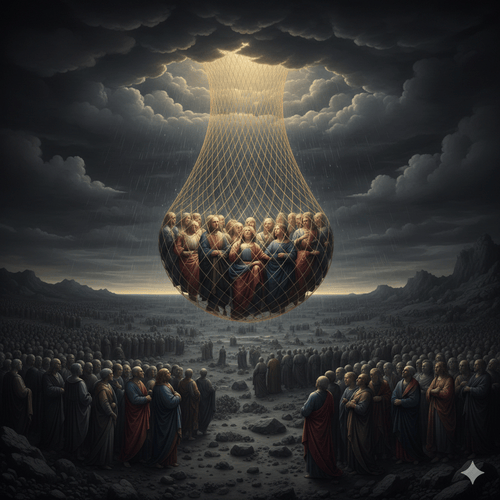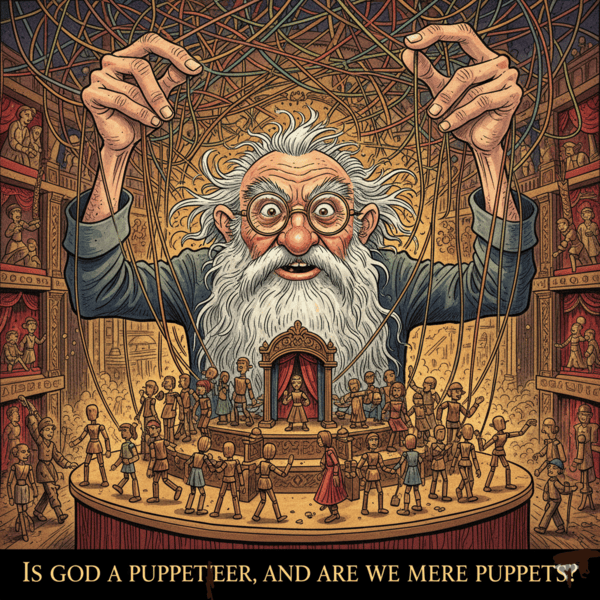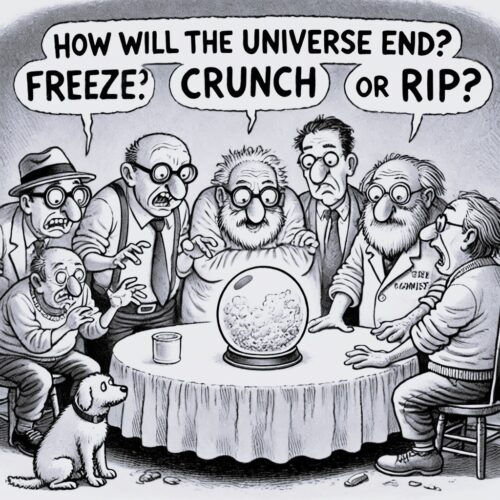End of Universe Theories: What Scientists Don’t Tell Us
FATAL FLAWS IN END OF UNIVERSE THEORIES:
Modern science claims to have unravelled the ultimate fate of our universe. From the “Big Freeze” to the “Big Rip,” prestigious institutions confidently present theories about how everything will end. They present theories about the universe’s ultimate fate, complete with complex mathematical models and impressive-sounding terminology.
But looking beyond the headlines, we begin to see compelling reasons to question these widely accepted assumptions. Let’s examine what the data really tells us.
THE CURRENT SCIENTIFIC CONSENSUS: A HOUSE OF CARDS
The mainstream scientific community predominantly supports three theories about the universe’s end: the Big Freeze, the Big Crunch, and the Big Rip. Each of these theories, despite their mathematical sophistication, contains flaws that undermine their credibility.
Theory #1: The Big Freeze—Everything Will Go Dark
Imagine leaving a hot cup of coffee on your desk. Over time, it cools down until it reaches room temperature. Scientists claim the entire universe will suffer a similar fate, but on an unimaginably massive scale. They call this the “Big Freeze” or “heat death.”
Here’s their argument: The universe is constantly expanding, like a balloon being inflated. As it expands, everything gradually cools down. Eventually, they claim, all the stars will burn out. And the universe will become eternally dark and lifeless.
But here’s what they don’t tell you:
- The Expansion Problem: Scientists base this theory on observations showing distant galaxies moving away from us. But they’re making a huge leap: they’re taking measurements made over just a few decades and using them to predict what will happen over billions of years. Imagine watching children grow for a year and then claiming you can predict exactly how tall each of them will be at age 100!
- The Energy Problem: The theory depends on something scientists call “dark energy”—a mysterious force they’ve never seen or measured directly. They invented the concept because their calculations didn’t match their observations. Isn’t it convenient to invent an invisible force to make your math work out?
- The Temperature Problem: While we know hot things cool down in our everyday experience, applying this principle to the entire universe requires massive assumptions. The fact is, we can’t even be sure if the universe has an “outside” to lose heat to!
Theory #2: The Big Crunch—Everything Will Collapse
Some scientists suggest gravity may eventually win out, causing everything to collapse back together. Think of throwing a ball up in the air—eventually, gravity pulls it back down. They suggest the same thing may happen to the entire universe.
While the theory is based on established gravitational principles, several crucial issues emerge:
- The Measurement Problem: Scientists can’t even agree on how much matter exists in the universe. Different measuring methods Seem to yield contradictory answers. How can they predict the universe’s fate when they can’t even measure its contents accurately?
- The Gravity Problem: The theory assumes gravity works the same way everywhere in the universe. But how can we know this? We’ve only studied gravity in our tiny corner of space. The universe is vastly larger than anything we can directly observe.
Theory #3: The Big Rip—Everything Will Tear Apart
The newest and perhaps most dramatic theory suggests the universe may eventually tear itself apart. Scientists claim the mysterious “dark energy” may become so powerful it rips apart galaxies, planets, and even atoms—literally.
This theory faces the biggest problems of all:
- It relies entirely on a force (dark energy) that scientists don’t understand
- It makes predictions we can never test
- It contradicts much of what we know about how matter behaves
END OF UNIVERSE THEORIES—THE DEEPER PROBLEMS
The theories share fundamental flaws that reveal deeper issues with modern cosmology:
- The Materialistic Straightjacket: Modern cosmology insists on purely materialistic explanations, automatically excluding all evidence that points to design or purpose. This self-imposed limitation leads scientists to create increasingly complex and implausible theories rather than consider simpler alternatives.
- The Interpretation Problem: Raw data doesn’t speak for itself—it must be interpreted. Modern cosmologists interpret everything through a materialistic lens, leading to distorted conclusions. What’s worse, they even seem to mistake their interpretations for facts.
- Technical Limitations: We cannot directly measure vast cosmic distances or verify conditions in the distant past. Every measurement relies on assumptions about light speed, the uniformity of physical laws, and the nature of time itself. These assumptions remain unproven yet are treated as fact.
WHAT MAKES MORE SENSE: LOOKING AT THE BIG PICTURE
When theories about the universe’s end fall short, we need to step back and ask a bigger question: Why do these theories fail to provide satisfying answers? The problem lies in their starting point. Scientists try to predict the universe’s end while ignoring crucial evidence about its nature and origin. It’s like trying to predict how a story will end without understanding who wrote it or why it was written.
The Universe Shows Intelligence
Consider what we actually observe in our universe:
- Everything follows precise mathematical patterns
- Complex systems work together in harmony
- Natural laws remain consistent and reliable
- Order persists despite countless opportunities for chaos
These characteristics tell us something important: our universe behaves more like a masterfully designed system than a cosmic accident. This insight directly affects how we should think about its end.
Why End Theories Must Consider Design
Think about how we predict the end of other designed things:
- We can predict a car will eventually wear out because we understand its design
- We know a building will eventually need renovation based on its architectural plan
- We can anticipate computer system failures by understanding their programming
Similarly, understanding the universe’s end requires understanding its design. The same precision that keeps planets orbiting and stars burning suggests purpose—and purpose tells us more about destiny than mathematical models alone.
Beyond Random Chance
The flaws in current end theories expose a deeper truth: you can’t explain the end of something properly if you ignore its purpose. Consider:
- How can we predict the universe’s end while ignoring the remarkable fine-tuning that keeps it running?
- Why do scientists overlook the countless “coincidences” that make life possible?
- Shouldn’t a theory about the universe’s end account for its apparent purpose?
CONCLUSION: WHY THIS MATTERS MORE THAN WE THINK
The way we think about the universe’s end profoundly affects how we understand our place in it and how we live our lives today. If the universe is merely a cosmic accident destined for a meaningless freeze, rip, or crunch—then nothing we do truly matters in the end. But if the universe shows evidence of purpose and design, then its end must be as purposeful as its beginning and operation.
This understanding shapes everything—from how we conduct scientific research to how we think about human significance. It affects whether we see ourselves as meaningless specks in a dying universe or as intentional parts in a grand design. It influences how we approach environmental stewardship, technological development, even our daily choices. When we recognise the same intelligence evident in the universe’s design likely governs its ultimate fate, we gain a broader perspective on cosmic questions and our role in answering them.
Most importantly, understanding the flaws in current end theories opens our minds to better explanations—ones that account for all the evidence, including the signs of purpose we see around us. This doesn’t mean abandoning scientific inquiry; rather, it means conducting science with full awareness of its limitations and openness to all the evidence, not just the parts that fit our preconceptions.
End of Universe Theories—Related FAQs
If scientists can’t accurately predict the universe’s end, how can anyone claim to know what will happen? There’s a crucial difference between observational science (what we can see and measure) and historical/predictive science (assumptions about past and future). While we can’t scientifically predict the universe’s exact end, we can look at its precise design, consistent laws, and apparent purpose to understand its nature. Just as you can understand a book’s likely ending by understanding its author’s purpose, we can better understand cosmic destiny by recognising the signs of intelligent design.
- Why do scientists keep changing their theories about the universe’s end? Changes in scientific theories often reflect the discovery of new problems with old explanations, rather than progress toward truth. When scientists discovered the universe’s expansion was accelerating, they invented “dark energy” rather than questioning their underlying assumptions about cosmic origins and purpose. This pattern of creating increasingly complex explanations to save existing theories suggests a fundamental problem with the materialistic approach to understanding our universe.
- If the universe is designed, shouldn’t we be able to predict its end more easily? Design doesn’t necessarily mean we can predict every detail of the future, just as knowing a house is designed doesn’t tell us exactly when its roof will need replacing. What design does tell us is that the universe’s end will align with its purpose, rather than occurring randomly through purely natural processes. The key is understanding that the same intelligence evident in cosmic fine-tuning likely governs its ultimate fate.
How does the universe’s expansion fit with a design perspective? Cosmic expansion appears precisely calibrated to allow for stable galaxies, stars, and life—which is just what we’d expect from design. If expansion were slightly faster or slower, life would be impossible. Instead of seeing expansion as a random process leading to eventual death, we can recognise it as part of an intelligently crafted system serving a purpose.
- Don’t quantum physics and chaos theory show the universe behaves randomly rather than by design? What appears random at small scales actually reveals deeper order when viewed properly. Quantum mechanics and chaos theory demonstrate precise mathematical patterns that suggest underlying intelligence rather than true randomness. The fact that seemingly chaotic systems produce consistent, life-supporting results points to design rather than accident.
- How do we explain entropy (increasing disorder) if the universe is designed? While entropy does cause disorder in closed systems, the universe shows remarkable persistence of order despite entropy. Stars continue burning steadily, galaxies maintain their spiral shapes, and life continues to exist—all suggesting the universe operates under intelligent guidance rather than purely natural processes. In fact, the presence of entropy may actually be necessary for the universe to function as designed.
If current theories about the universe’s end are wrong, what alternative explanation makes more sense? Rather than claiming detailed knowledge about the universe’s end, we should recognise the same intelligence evident in cosmic fine-tuning likely has a purpose for its conclusion. Understanding cosmic destiny requires looking beyond purely material explanations to consider evidence of design and purpose throughout the universe. Just as the universe’s beginning and operation show clear signs of intelligence, its end will likely reflect purposeful design rather than random.
End of Universe Theories—Our Related Posts
Editor's Pick

Why Do People Hate the Doctrine of Election?
…WHEN THEY REALLY SHOULDN’T Few Bible doctrines provoke stronger reactions than election. The idea that God chose some for salvation [...]

The Doctrine of Providence: Does God Really Govern All Things?
You’re sitting in the doctor’s office when the diagnosis lands like a thunderclap. Your mind races: Why this? Why now? [...]

No Decay, No Defeat: What It Means That Christ’s Body Saw No Corruption
On the Day of Pentecost, Peter stood before thousands and made a startling claim: David's body decayed in the tomb, [...]
SUPPORT US:
Feel the Holy Spirit's gentle nudge to partner with us?
Donate Online:
Account Name: TRUTHS TO DIE FOR FOUNDATION
Account Number: 10243565459
Bank IFSC: IDFB0043391
Bank Name: IDFC FIRST BANK






